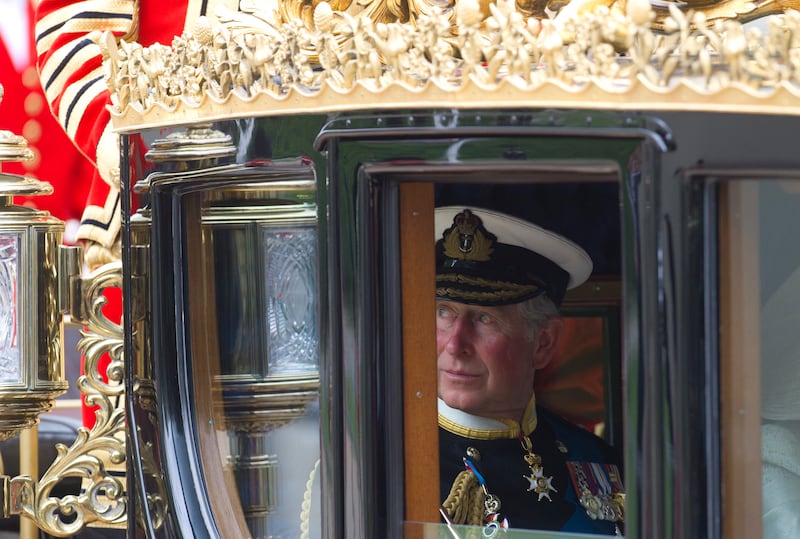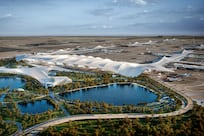There are 11 members of the British royal family that are referred to as “working royals”.
These are the senior members of the Windsor family who represent the monarch at various functions — they host official dinners, attend garden parties, open flower shows, attend sports events and royal celebrations, and cut ribbons at a multitude of ceremonies.
How much they are paid to do this is far from clear. Much of the money they receive comes from the monarch's private income that is derived from the Duchy of Lancaster.
The exceptions to this are the Prince and Princess of Wales, who receive an income from the Duchy of Cornwall.
But the cost of maintaining the residences where the working royals live and ferrying them to events across the country — and around the world — comes out of the Sovereign Grant, which is a percentage of the annual profit made by the Crown Estate.
“It’s quite opaque in and around on exactly what they do have, but the fundamental question is whether a government has the courage to go and talk to the organisation and say, ‘Right, we need to clear this up, because that’s the problem at the moment — we need to work out what your private assets consist of’,” royal historian Ed Owens told The National.
“I also think it’s extremely complicated and it’s to do with the level of complexity around exactly what the Crown does have.”
King Charles III
For 70 years as the heir to the throne, King Charles's principle source of income was the Duchy of Cornwall.
The Guardian recently calculated that, over those seven decades, he would have accumulated somewhere in the region of £612 million from that estate. Now that he is king, he will be in line for about £20 million a year from the Duchy of Lancaster estate.
King Charles is now head of the Windsor household and all money that goes to the other working royals comes through him. Because of his reputed spendthrift ways, it is believed he will reduce the number, and therefore the cost, of the other working royals.
Both he and Queen Consort Camilla currently live at Clarence House, a four-storey stucco house right up The Mall from Buckingham Palace in London.
It was built by the architect John Nash between 1825 and 1827 for King George III's third son, the Duke of Clarence, and was previously home to Queen Elizabeth, the Queen Mother, for almost five decades.
King Charles moved into Clarence House in 2003, following the death of the Queen Mother, who herself had moved in after her daughter, Queen Elizabeth II, became her reign and moved to Buckingham Palace.
He will stay at Clarence House until at least 2027 while renovations are being carried out at Buckingham Palace, the usual residence for modern British monarchs.
But King Charles either owns nor has access to several other properties, including Highgrove House, Birkhall Castle, Llwynywermod, Dumfries House and the Castle of Mey. He has also inherited the queen's estates at Sandringham in Norfolk and Balmoral in Scotland.
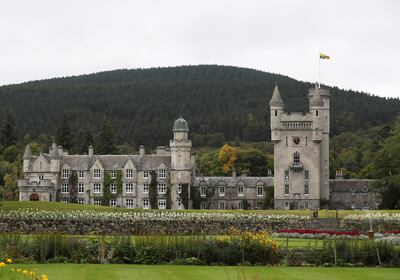
The 20,200-hectare estate that is Balmoral Castle was bought by Queen Victoria's husband, Prince Albert, in 1852.
The Aberdeenshire estate was the favourite summer home of Queen Elizabeth, who died there on September 8 last year.
Birkhall Castle is a 2,400ha estate that borders Balmoral and was also bought by Prince Albert in 1849, while Dumfries House is not used as a residence. Instead, the Scottish house is used for educational purposes and hosts conferences.
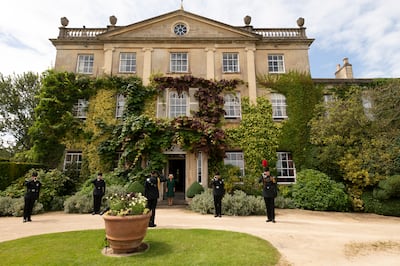
Highgrove House in Gloucestershire is the family residence of King Charles and Queen Consort Camilla. The Duchy of Cornwall bought it in 1980, when the king was Prince of Wales, and he runs the house and gardens according to his environmental principles.
Of course, on ascending to the throne, King Charles is no longer Prince of Wales nor the Duke of Cornwall, so he now leases Highgrove House from the Duchy of Cornwall.
So, essentially, the new Prince of Wales and Duke of Cornwall is now the landlord to the king — King Charles pays rent to his son, Prince William, for Highgrove House.
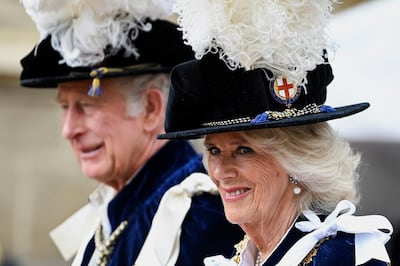
Queen Consort Camilla
As the wife of the monarch, Queen Consort Camilla lives in the same royal residences that her husband does.
However, she also has her own house called Ray Mill House, near Reybridge in Wiltshire, which she bought following her divorce from her first husband, Andrew Parker Bowles, in 1994.
The six-bedroom house set in 5ha of gardens with a swimming pool and stables, and is often referred as the queen consort's “refuge” or “guilty pleasure” in the British press.
About a 40-minute drive from Highgrove House, the queen consort is reported to have paid £850,000 for Ray Mill House, which sits next to the River Avon.
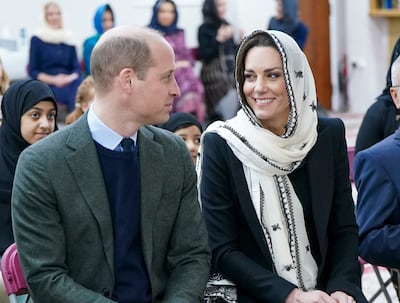
Prince and Princess of Wales
When in London, the Prince and Princess of Wales live in Apartment 1A in Kensington Palace.
According to Vogue, the 22-room, four-storey apartment underwent a $1.6 million renovation in 2013 prior to the couple moving in, and then an additional $4.9 million revamp happened a year later.
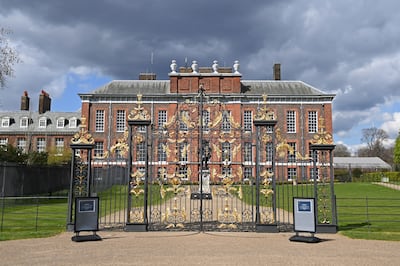
However, on a day-to-day basis, Prince William and Kate live at Adelaide Cottage on the Windsor Estate, having moved there in September last year to be nearer the increasingly frail Queen Elizabeth but also to have better proximity to the children's schools.
Built in 1831 for Adelaide of Saxe-Meiningen, wife of King William IV, the four-bedroom home is a short walk from Windsor Castle.
The residence is considerably smaller than the apartment at Kensington Palace and is owned by the Crown Estate, to which Prince William pays rent.
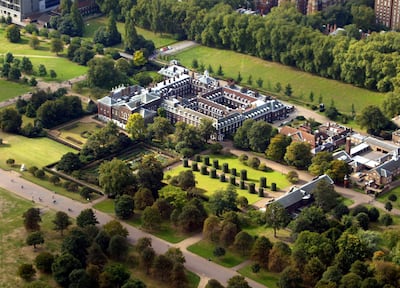
King George VI's equerry, Group Capt Peter Townsend, lived in Adelaide Cottage after the Second World War and referred to it as an “icebox”, given that, at the time, the property had only two radiators.
It is rumoured that the Prince and Princess of Wales would like to move into the nearby Royal Lodge, but that is currently occupied by Prince Andrew.
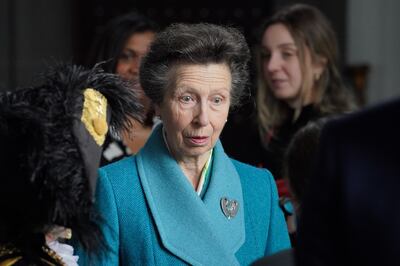
Anne, Princess Royal
Princess Anne spends the majority of her time at Gatcombe Park in Gloucester, but also has an official London base at St James’s Palace.
Gatcombe Park, which is close to her brother King Charles's Highgrove House estate in Gloucestershire, was a wedding present from her mother, Queen Elizabeth, in 1976, when Princess Anne married Capt Mark Phillips.
Although it was not disclosed at the time, it was thought Gatcombe Park was bought for between £500,000 and £750,000, which would be about £6 million today.
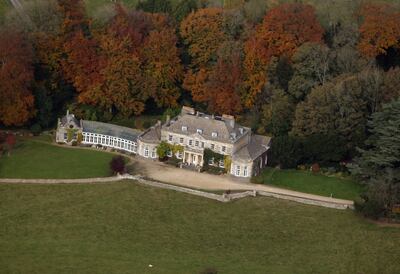
Gatcombe Park is famous in the world of horse trials as it hosts the Festival of British Eventing over the first weekend of August every year.
Her daughter, Zara Tindall, also lives on the estate with husband Mike and their two young daughters.
Meanwhile, if in London, Princess Anne usually stays at St James's Palace, a royal residence that traces its origins to Tudor times.
Built largely between 1531 and 1536 by King Henry VIII, a lot of the original redbrick building survives to this day, including the Chapel Royal, the gatehouse, some turrets and two Tudor rooms in the State apartments, according to St James's Palace website.
There is much history connected with St James's Palace. Kings Charles II and James II and queens Mary II and Anne were all born and baptised there. Queen Elizabeth I stay there when the Spanish Armada threatened to invade Britain and went from there to Tilbury to deliver her famous speech to her amassed forces.
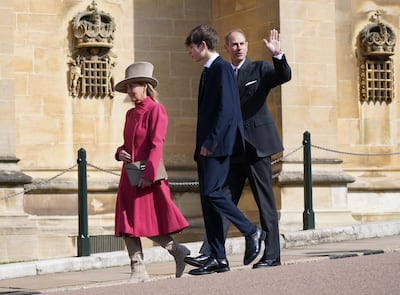
Duke and Duchess of Edinburgh
When in London, Prince Edward and his wife Sophie, Duchess of Edinburgh, tend to stay in apartments at Buckingham Palace, even though the building is currently undergoing considerable renovation.
But most of their time is spent at their Bagshot Park home in Surrey.
Prince Edward has leased the huge 120-room property since 1998, a year before he and Sophie got married, and reports suggest the prince has renewed the lease from the Crown Estate for 150 years at a cost of about £5 million.
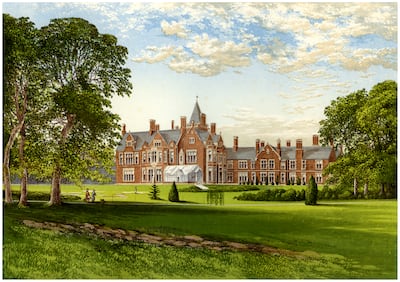
The couple live at Bagshot Park with their son, James, the Earl of Wessex, and their daughter Lady Louise Windsor, when she is home from St Andrews University in Scotland.
The grounds are impressive, with a private lake and several stables set within 20ha. After its reconstruction in 1879, the property was owned by Queen Victoria’s third son, Prince Arthur.
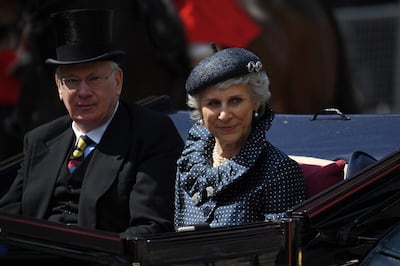
Duke and Duchess of Gloucester
Prince Richard, Duke of Gloucester, is the second son of Prince Henry and Princess Alice and is the youngest of the nine grandchildren of King George V and Queen Mary. This makes him 30th in line to the British throne. He is a first cousin once removed to King Charles III.
Henry, Prince Richard’s father, was the younger brother of King George VI, Queen Elizabeth’s father.
Prince Richard never expected to be Duke of Gloucester and a working royal.
He was what is commonly known in royal circles as a “spare”. In line with the title of Prince Harry's autobiography, British aristocratic family refer to the second son as a “spare” — a family's fortunes are secured by having an heir and a spare.
But in 1972, his elder brother, William, died in a plane crash, making him the heir when their father died two years later.
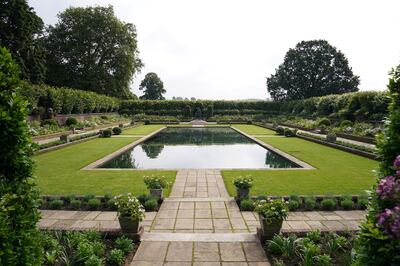
The prince, 78, and Birgitte, Duchess of Gloucester, live at Old Stables, a “cottage” in the grounds of Kensington Palace in London.
The couple used to live at the family seat of Barnwell Manor in Northamptonshire, but rented the property out after moving to Kensington Palace in 1995.
Prince Richard's father Henry bought the 40-room, Grade II listed Barnwell Manor in 1938. The estate comprises about 1,000ha of farmland.
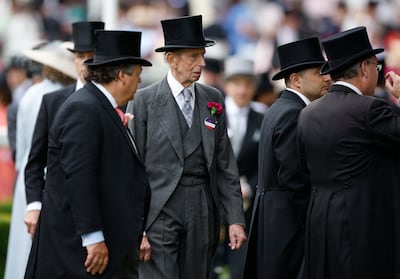
Prince Edward, Duke of Kent
The 87-year-old Duke of Kent has been a working royal since 1961. Until 2021, he was perhaps best known for handing out the Wimbledon winners’ trophies as the president of the Lawn Tennis Association.
His long stint as a working royal is thought to have earned him about £18 million, when adjusted for inflation.
Prince Edward is another first cousin once removed to King Charles and he used to work as the UK’s royal trade envoy, a position later held by King Charles's brother, Prince Andrew.
He is the UK’s most senior Freemason, having been appointed grandmaster of the United Grand Lodge of England in 1967.
His wife, Katharine, stepped back from royal duties more than 20 years ago and returned to teaching music.
Since 1978, the couple have lived at Wren House, another residence in the grounds of Kensington Palace in London. Wren House is named after Sir Christopher Wren, the architect most famously associated with designing and building St Paul's Cathedral in London.
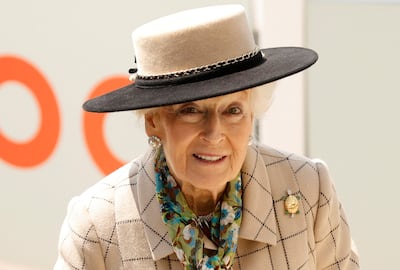
Princess Alexandra, The Honourable Lady Ogilvy
Princess Alexandra is the sister of Prince Edward, Duke of Kent, and also a cousin once removed to King Charles.
Despite suffering from arthritis, the 86-year old princess is still listed as a working royal and continues to attend ceremonial and charitable engagements.
In better times, Princess Alexandra would represent Queen Elizabeth at about 120 functions a year, making her one of the most active working royals.
In 1963, she married Angus Ogilvy, a successful businessman and second son of the 12th Earl of Airlie. The couple moved into Thatched House Lodge, set in 1.6ha of grounds in Richmond Park in south-west London.
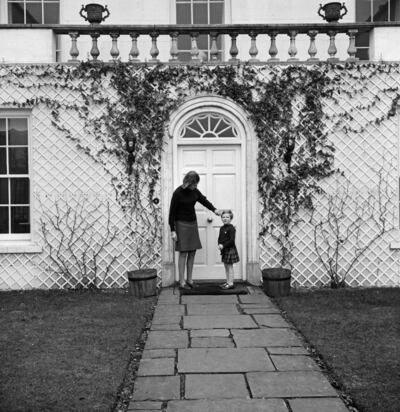
Mr Ogilvy purchased the leasehold Thatched House Lodge from the Crown Estate on the open market for about £150,000 in 1963. He then extended the lease for another 150 years from 1994 for £670,000, plus a ground rent of £1,000 a year, for the first 25 years.
The six-bedroomed Thatched House Lodge is slightly different from the other royal residences, because its lease was purchased on the open market from the Crown Estate and its residents paid for all the maintenance themselves, rather than the Crown Estate picking up the bill.
Princess Alexandra still lives there and also has the use of a grace-and-favour apartment in St James’s Palace in central London.
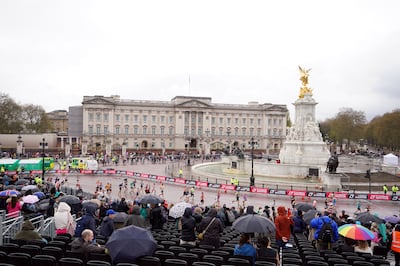
The 'empty' palaces and the other houses
There are, of course, many palaces, manor houses and castles that the royal family does not live in and only visit occasionally.
Many, like Buckingham Palace and Windsor Castle, are major tourist attractions.
For example, the royal family has not lived at Hampton Court for hundreds of years — in the 1700s, King George II was the last monarch to live in at Hampton Court.
Originally, Hampton Court was built, owned and lived in by King Henry VIII's chief minister, Cardinal Thomas Wolsey, in 1514. However, by 1529, the king found he liked Hampton Court more than Cardinal Wolsey, so to curry favour and avoid death, the cardinal gave Hampton Court to the king.
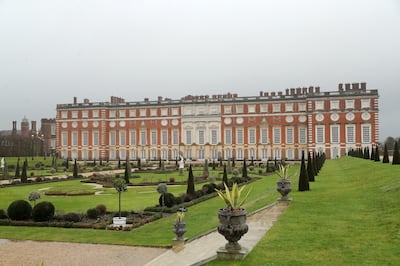
Later monarchs, especially King William III, destroyed a lot of the Tudor buildings and massively expanded the site on the River Thames.
According to the UK's Association of Leading Visitor Attractions, Hampton Court Palace received a little more than 527,000 visitors last year.
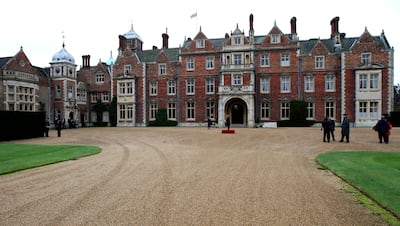
Still other royal houses are privately owned residences such as the 8,100ha Sandringham estate on the Norfolk coast, which passed to King Charles after the death of his mother Queen Elizabeth.
The Prince and Princess of Wales used to live in Amner House, a 10-bedroom Georgian home on the Sandringham Estate that was given to them by Queen Elizabeth after their wedding.
Meanwhile, many will be familiar with Frogmore House and Frogmore Cottage. Close to each other in the Home Park in Windsor, Frogmore House has not been occupied since 1872, but serves as a venue for royal occasions, such as the wedding reception of Prince Harry and Megan, while the four-bedroom Frogmore Cottage was were the couple lived for a short time.
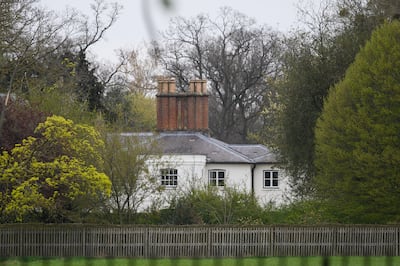
Renovations on the residence totalling £2.4 million started in 2019.
But then came Prince Harry's “split” from the royal family and the announcement that he and his wife would no longer be working royals.
As such, the Duke and Duchess of Sussex moved to a new home in California and repaid the £2.4 million refurbishment costs.
In the meantime, Prince Harry's cousin Princess Eugenie and her husband, Jack Brooksbank, moved into Frogmore Cottage in the autumn of 2020 for the birth of their first child.
It is now rumoured that King Charles is offering Frogmore Cottage to his scandal-hit brother Prince Andrew as a place to live, which would free up the Royal Lodge for the Prince of Wales and his family.
The 30-room Royal Lodge is 5km south of Windsor Castle and has been occupied by Prince Andrew and his former wife Sarah Ferguson for the best part of 20 years.
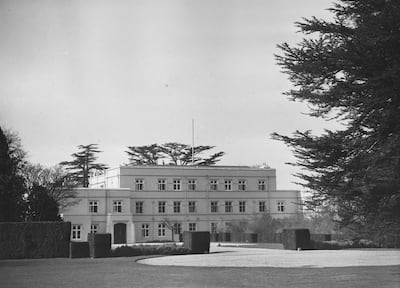
At only 40km from central London, it was formerly the country home of King George VI and Queen Elizabeth. The Queen Mother continued to use the lodge as one of her country retreats until her death in 2002.
It was estimated in January 2022 that the Royal Lodge estate was worth in excess of £30 million.
There are also official royal residences in Scotland and Northern Ireland.
In Northern Ireland, the official royal residence of the monarch is Hillsborough Castle, which is set on 40ha of gardens and manicured lawns.
In Scotland, the Palace of Holyroodhouse at the end of the Royal Mile in Edinburgh serves as the British monarch's official residence.
Originally a founded as a monastery in 1128, the Palace of Holyroodhouse is open to the public all year round.
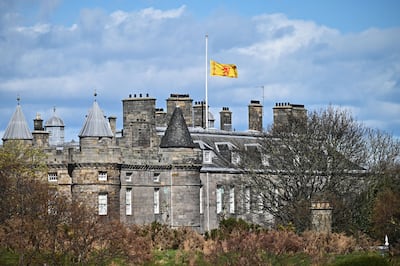
Many of the royal residences are clumped together — Windsor Castle, the Royal Lodge, Frogmore House, Frogmore Cottage and Fort Belvedere are all close to each, with Thatched House Cottage and Bagshot park not far away.
Wren Cottage, Nottingham Cottage and Ivy Cottage are all in the grounds of Kensington Palace and Birkhall and Craigowan Lodge are on the Balmoral estate.
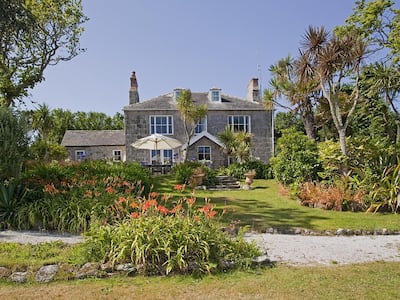
But one is slightly more remote and yet more accessible to the public.
Many royal family members have been known in the summer months to dash over to Dolphin House, a holiday home on the island of Tresco in the Scilly Isles off the south-west coast of Cornwall.
The Duchy of Cornwall has leased the island out to the same family since 1834, which, technically, means the Prince of Wales owns it.
The six-bedroom Dolphin House can be rented out to the public as well, for between £4,000 and £5,000 a week in the summer.
Are they worth it?
The perennial question that is always asked at times of change or upheaval for the royal family is: are they worth it, and do they represent value for money for the British taxpayer?
Experts contend that this simple question is actually a difficult one, not least because the “worth” is so hard to quantify, given the opaque nature of royal finances.
Taking the core of the Sovereign Grant that comes from the Crown Estate, the cost to each British taxpayer is about 77p per year.
“This idea of ‘worth it’ really came into sharp focus in the 20th century at a time when the monarchy was having to justify its position publicly,” Dr Owens told The National.
“And it’s linked to this idea of royal work — we pay, they perform. That’s inherently problematic as it is, because it suggests that this is like a job and there’s nothing quite like it.
“So, trying to come up with some judgment as to whether this family are worth it is really complicated.”
When the “worth it” question is asked, Dr Owens said the claim that the royal family bring in tourists is usually offered by defenders of the monarchy.
While this may be true for certain occasions, and there is evidence from the global hospitality data and analytics company STR that hotel bookings are up sharply in London for the weekend of King Charles's coronation, generally speaking, Dr Owens said that there is “nothing to suggest that the British tourism industry wouldn’t thrive without the British monarchy”.
“There’s very little evidence that British tourism would necessarily decline if we didn’t have a monarchy — so, it comes down to more fundamental questions what kind of social, political and economic systems we want,” he said.
In a recent YouGov poll which asked how likely people were to view the coronation and take part in celebrations surrounding it, 28 per cent of respondents said “not likely at all”.
But for those aged between 25 and 49, that figure rose to 35 per cent, which illustrates the problem the royal family has relating to younger people.
Only four of the 11 working royals are under 70 years old, and while opinion polls still show more than half of the British public remain in favour of keeping a monarchy, Dr Owens believes that “what is of great concern to the monarchy right now is a disaffection among younger people”.
Rising above the current malaise of British politics has never been more important for the House of Windsor and may hold the key to the future of the monarchy, Dr Owens said.
“At a time when the country finds itself with a political system and a political class who do not seem to value transparency, accountability and integrity to the extent that we might like, it would be a powerful symbolic message for a king to embrace those ideas more fully and to put them into practice, certainly in relation to how we understand royal finance,” he said.
